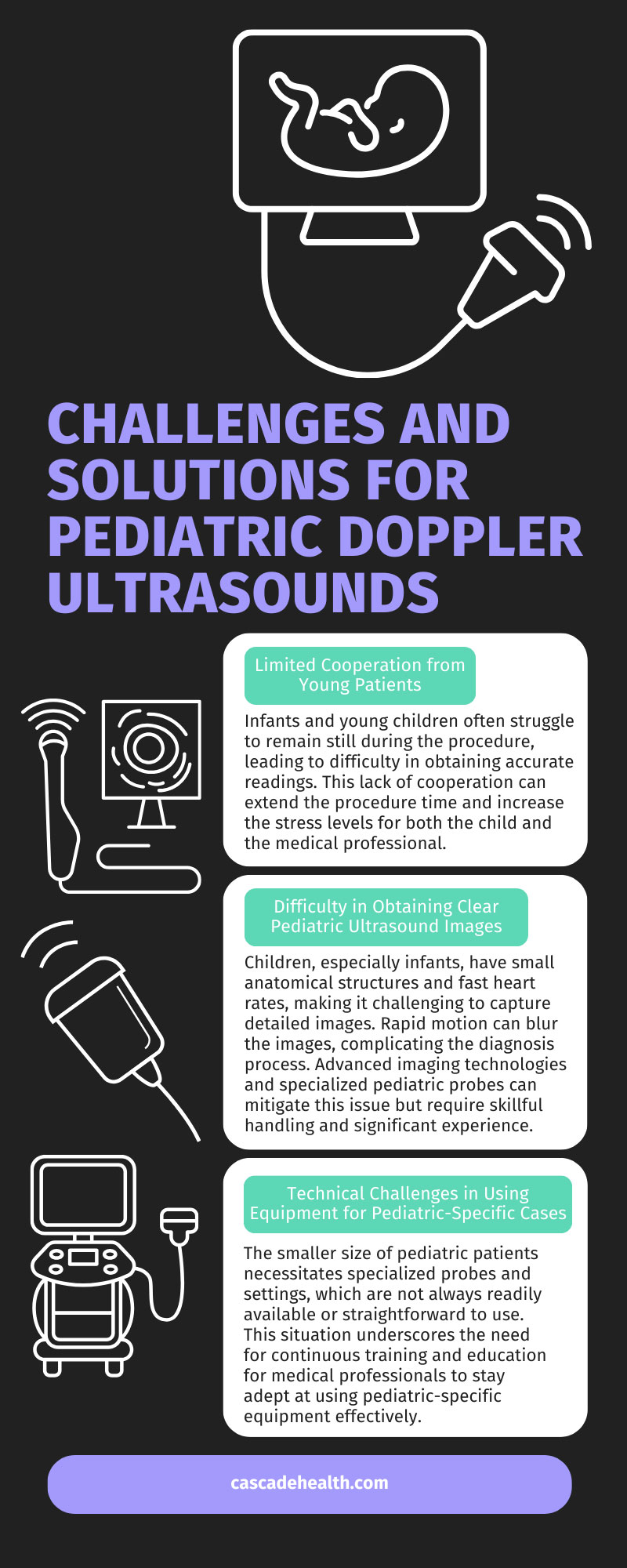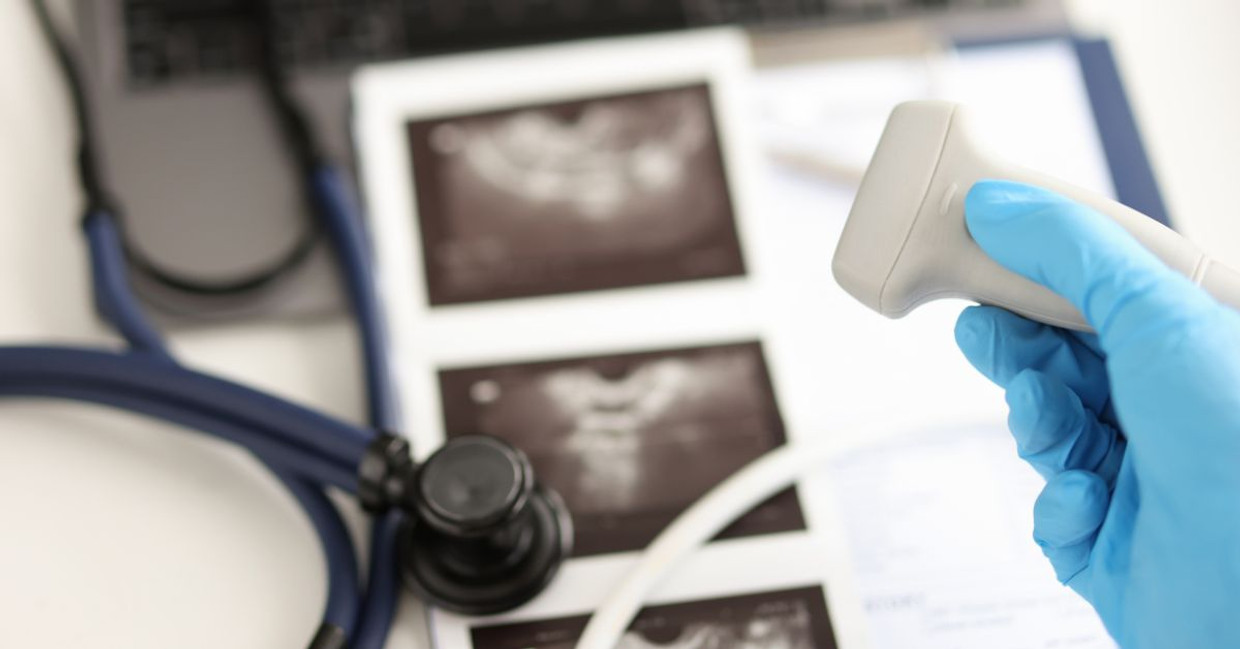Challenges and Solutions for Pediatric Doppler Ultrasounds
Pediatric Doppler ultrasounds are indispensable tools in modern healthcare, especially for diagnosing conditions in infants and children. Yet, these valuable procedures come with a set of unique challenges. We’ll explore the common challenges and solutions for pediatric Doppler ultrasounds, providing helpful insights to encourage best practices.
Understanding Doppler Technology
To best understand the challenges and solutions specific to pediatric ultrasounds, let's begin with a foundational understanding of Doppler technology. Doppler ultrasound is a noninvasive diagnostic method that uses high-frequency sound waves to produce images of blood flow within the body.
The Doppler effect, which refers to the change in frequency or wavelength of waves in relation to an observer, is harnessed in this technology to measure the velocity of blood flow, helping to detect abnormalities such as blockages or heart defects.
This technology is particularly valuable in pediatrics, where early diagnosis and intervention can significantly impact a child's health and development.
Uses of Doppler Technology in Pediatrics
Doppler technology has revolutionized pediatric care. It can be used to monitor fetal development during pregnancy, assess congenital heart defects, and even evaluate blood flow in the brain and other organs.
For example, pediatric cardiologists frequently use Doppler ultrasounds to investigate heart murmurs, while neonatologists may employ this technology to monitor cerebral blood flow in premature infants. Visualizing and measuring blood flow offers invaluable insights that guide treatment plans and interventions, ultimately improving patient outcomes.
Common Challenges Faced by Medical Professionals
Despite the invaluable advantages of pediatric Doppler ultrasounds, medical professionals encounter several challenges when performing these procedures on infants and children. These challenges stem from a variety of factors, such as patient cooperation, anatomical variances, and the technical intricacies of using Doppler technology in a pediatric setting. Understanding these obstacles is crucial for developing effective strategies to overcome them and ensure accurate diagnoses and optimal patient care.
Limited Cooperation from Young Patients
One of the most significant challenges in pediatric Doppler ultrasounds is gaining cooperation from young patients. Infants and young children often struggle to remain still during the procedure, leading to difficulty in obtaining accurate readings. This lack of cooperation can extend the procedure time and increase the stress levels for both the child and the medical professional.
Techniques such as distraction methods, soothing environment settings, and involving caregivers can help, but these are not always foolproof. This challenge necessitates innovative approaches to improve patient cooperation and procedural efficiency.
Difficulty in Obtaining Clear Pediatric Ultrasound Images
Another major challenge is obtaining clear images. Children, especially infants, have small anatomical structures and fast heart rates, making it challenging to capture detailed images. Rapid motion can blur the images, complicating the diagnosis process. Advanced imaging technologies and specialized pediatric probes can mitigate this issue but require skillful handling and significant experience.
Technical Challenges in Using Equipment for Pediatric-Specific Cases
Pediatric cases often present unique technical challenges. Standard Doppler ultrasound machines are generally designed for adult use and adapting them for pediatric cases can be cumbersome.
The smaller size of pediatric patients necessitates specialized probes and settings, which are not always readily available or straightforward to use. This situation underscores the need for continuous training and education for medical professionals to stay adept at using pediatric-specific equipment effectively.
Innovative Solutions and Best Practices
Medical professionals and technologists have developed a range of innovative solutions and best practices to address the unique challenges associated with pediatric Doppler ultrasounds. These advancements aim to enhance patient cooperation, improve image clarity, and optimize the use of Doppler equipment specifically for pediatric applications.
By integrating these strategies into routine practice, healthcare providers can significantly improve the accuracy and efficiency of pediatric Doppler ultrasounds, ultimately leading to better health outcomes for young patients. In the following sections, we will delve into these specific solutions and best practices in greater detail.
Advancements in Technology That Address Challenges
The good news is that technological advancements are making it easier to overcome these challenges. Innovations such as portable Doppler machines, which are smaller and more maneuverable, are becoming increasingly popular. These devices often come with pediatric-specific settings that make it easier to obtain accurate readings.
Additionally, artificial intelligence (AI) and machine learning algorithms are being integrated into Doppler ultrasound systems to automatically adjust settings and improve image quality, thereby reducing the margin for human error.
Techniques for Improving Patient Cooperation and Comfort
Improving patient cooperation and comfort can significantly enhance the effectiveness of pediatric Doppler ultrasounds. Child-friendly environments, involving parents or caregivers in the procedure, and employing distraction methods such as toys or videos can make a significant difference.
Some clinics have started using virtual reality headsets to keep children engaged and distracted during the procedure. Explaining the procedure in a child-friendly manner can also make a world of difference in easing a child's anxiety.
Training and Education for Medical Professionals
Continuous training and education are crucial for medical professionals to stay updated with the latest advancements and best practices in pediatric Doppler ultrasounds. Workshops, online courses, and hands-on training sessions can provide valuable insights and practical skills.
Institutions should prioritize offering specialized training programs focused on pediatric cases, as this can significantly improve the overall service quality and patient outcomes. Additionally, peer-to-peer learning and sharing experiences within the medical community can provide practical tips and enhance collective knowledge.
The Future of Pediatric Doppler Ultrasounds
The future of pediatric Doppler ultrasounds looks promising, with continuous advancements in technology and practices. AI and machine learning will likely play a more significant role in automating and improving diagnostic accuracy. Portable and handheld devices will become more sophisticated, making it easier for medical professionals to conduct ultrasounds in various settings, including remote and underserved areas.
Additionally, innovations in imaging technology, such as 3D and 4D Doppler ultrasounds, will provide more detailed and accurate images, further enhancing diagnostic capabilities. Integrating telemedicine with Doppler technology could also revolutionize pediatric care by allowing specialists to review and interpret ultrasound images remotely, providing timely and accurate diagnoses.
The field of pediatric Doppler ultrasounds is continually evolving, offering new challenges and opportunities for medical professionals. By understanding the common challenges and solutions for pediatric Doppler ultrasounds, healthcare providers can significantly improve the effectiveness and efficiency of these essential diagnostic procedures.
We encourage medical professionals to share their experiences and insights, as collective knowledge can drive further advancements in the field. If you're looking to enhance your practice with advanced Doppler technology, check out Cascade Health Care's portable vascular Dopplers. Your expertise, combined with cutting-edge technology, can make a significant difference in improving pediatric care.

Recent Posts
-
Exploring Recent Innovations in Doppler Signal Processing
Doppler technology has become an essential diagnostic tool in modern medicine, enabling healthcare p
-
Exploring Recent Innovations in Doppler Signal Processing
Doppler technology has become an essential diagnostic tool in modern medicine, enabling healthcare p


